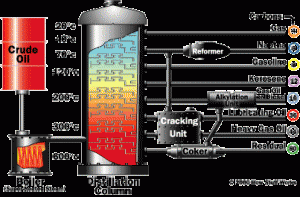Increasing crude distillation unit (CDU) efficiency is a primary objective for refiners as changes in plant-wide processing strategies are implemented to deal with higher process complexity. Beginning at the front-end of the refinery, CDU intermediate product quality can be improved by reducing variability. In addition, operating closer to process or equipment design constraints without exceeding these limits will result in maximum utilization and increased profitabibility.
In efforts to improve CDU efficiency, Emerson Process Management’s Doug White, VP, APC Services, recently posted (www.emerson.com) an example of a European refiner targeting CDU throughput, maximum intermediate product recovery value, maximum heat recovery and improvement to overall energy efficiency. With the input from Emerson’s Chief Blogger, Jim Cahill (www.emersonprocessexperts.com), additional detail concerning other recent CDU projects was discussed. In this case, incorporating technology such as embedded multivariable model predictive control (MPC) within Emerson’s DeltaV Control System was an important component of the unit upgrade.
A typical refinery CDU includes fired heaters, atmospheric and vacuum distillation towers, and linked process assets (e.g., heat exchangers, pumps, strippers, etc.). Accurate evaluation of equipment constraints are required to cost effectively achieve required operating objectives. Process changes to downstream conversion units, such as the FCCU, naphtha reformer and hydrocracker typically require adjustments to CDU operations. The CDU also needs to transition smoothly and quickly during crude oil switching to minimize impact to downstream units.
In the case of the European refinery, the Emerson team worked with the refinery’s engineering and operations staff to plan and execute this CDU optimization project. The project implementation plan first involved conducting a site survey to gather data on current performance and perform preliminary step testing to understand the unit’s process dynamics.
The team then designed functional, detailed test specifications for review, iteration and acceptance by the refinery project staff. After this design phase was completed, next was the build-phase where the advanced process controllers (APC), step tests of manipulated variables (MV) / disturbance variables (DV) and models was developed.
The final commissioning step was to commission the controllers, train the engineering and operations staff, and conduct the site acceptance test per the test specifications. These interactions made single and cascade loop control strategies difficult to implement and maintain over time. The process had a number of disturbances for which the model needed to account. It also took a long time for the process to reach steady state conditions. The solution was to create five APC controllers–one for each fired heater, one for the atmospheric tower, reflux drum, and stripping towers and one for the vacuum tower.








Leave a Reply
You must be logged in to post a comment.